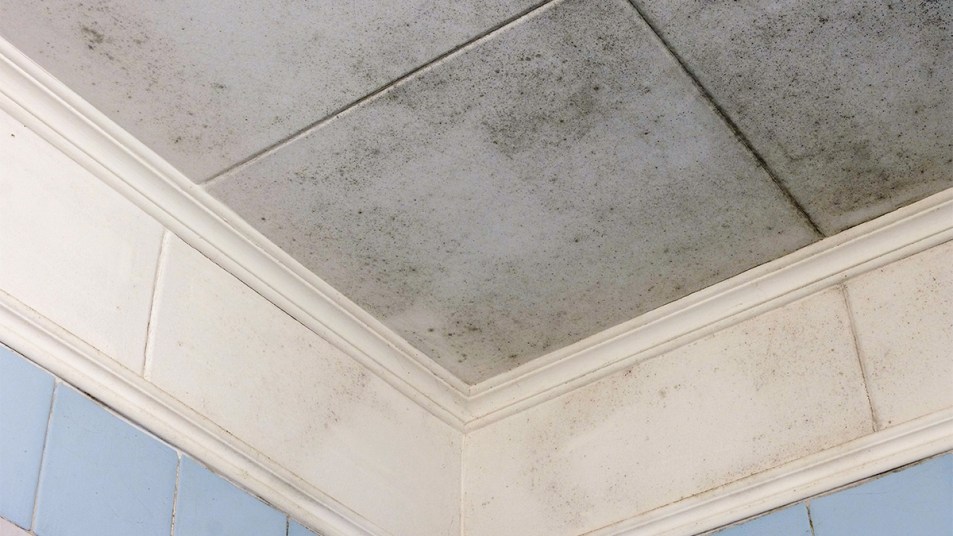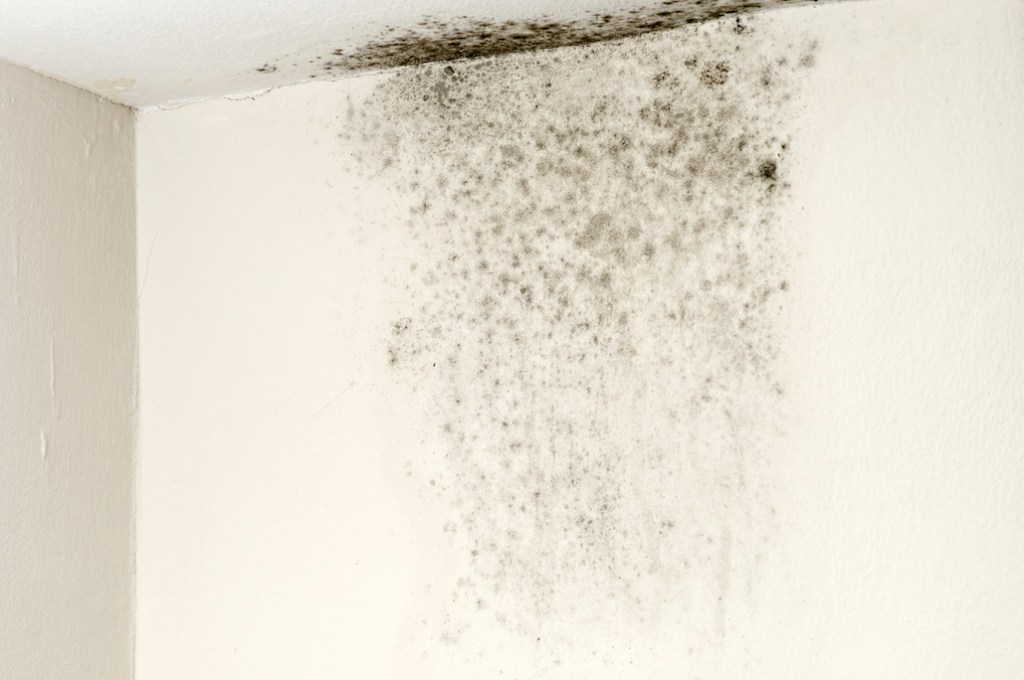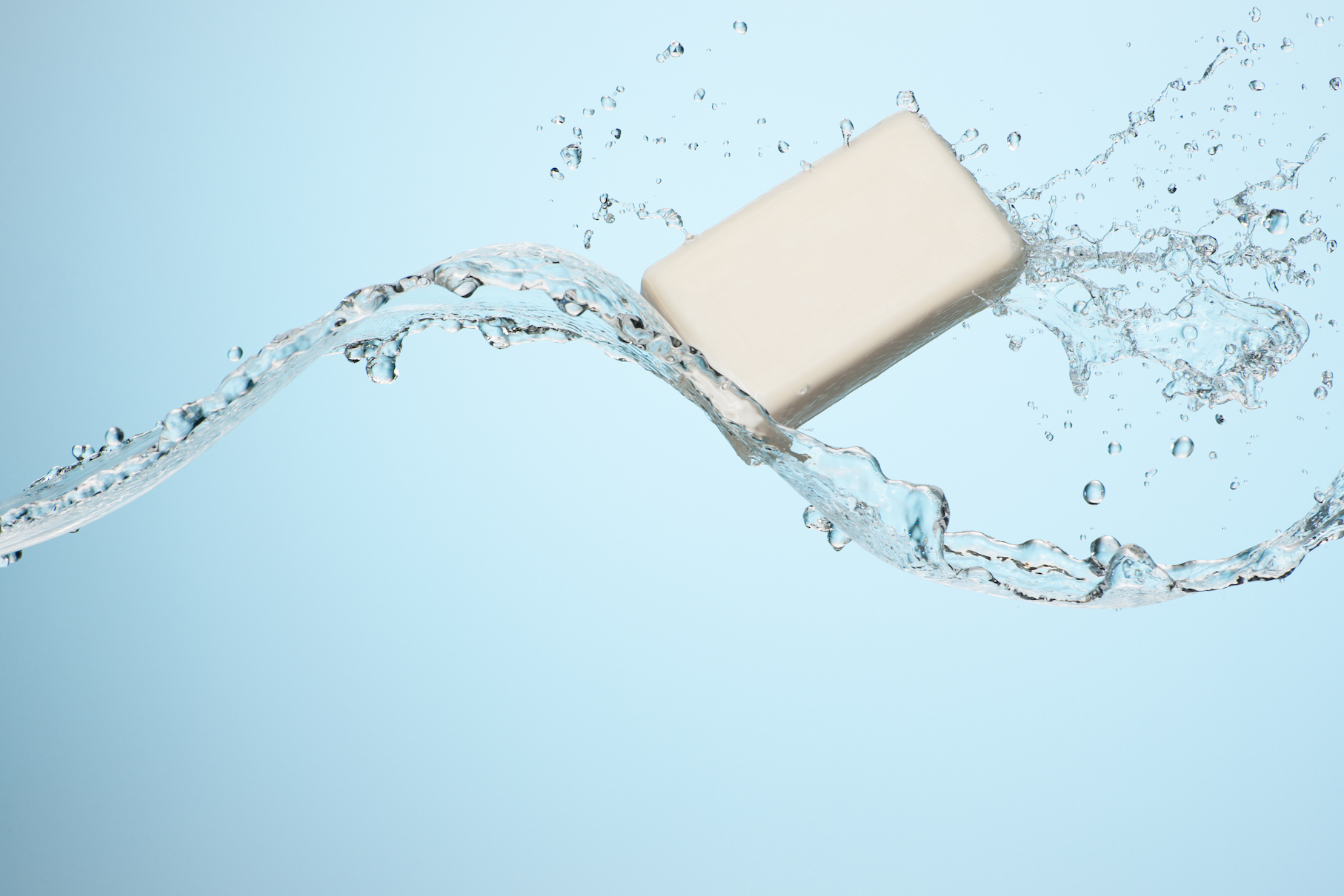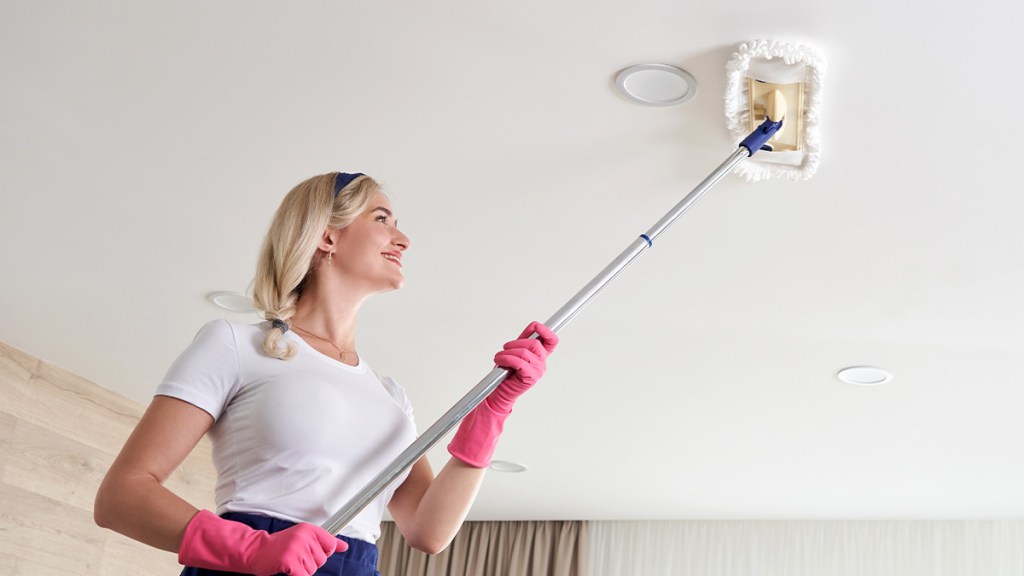Air Quality Expert & Pro Cleaner: The 5 Things *Never* To Do When You Find Mold on The Ceiling + The One Easy Fix
Hint: Step back from the bleach and reach for *this* instead

You’re walking around your home when you suddenly spot something on the ceiling. You can’t quite make out what it is, so you squint and move closer — uh oh, is that mold? If it is, you’re like most of us, as one study at the University of Arizona in Tucson found that 100 percent of homes harbored mold. The good news? Removing mold on ceilings, and anywhere else you may spot it in your home, is a cinch, say cleaning pros. The caveat? Knowing what not to use to clean it is just as important as learning what you can use, say cleaning experts. Here, what to avoid, the best method to use and how to prevent mold on your ceiling in the first place.
Why am I getting mold on my ceiling?

According to Logan Taylor of the Dazzle Cleaning Company, mold on the ceiling occurs due to moisture, organic material and poor ventilation. And finding the source will be key to ensuring that once you do clean the mold on your ceiling, it won’t come back. Common reasons you may see mold on the ceiling or elsewhere:
- Leaks: Dealing with rain or snow? “Water can infiltrate the roof through damaged shingles or other roofing materials,” explains Alicia Sokolowski, president and co-CEO of cleaning product brand AspenClean. “This moisture can seep into the ceiling and create a damp environment conducive to mold growth.” Another common way moisture sneaks in is through plumbing leaks above the ceiling.
- Poor ventilation: Bathrooms, kitchens and attics are all susceptible to accumulated moisture due to inadequate ventilation, says Sokolowski. “Without proper airflow to dry out damp areas, mold can thrive.”
- Condensation: “When warm, humid air comes into contact with a cold ceiling surface, condensation can form,” Sokolowski states. This condensed moisture can provide the conditions for mold development over time.
- High humidity: Whether due to poor ventilation or excess moisture in the air — or both — elevated indoor humidity levels love to encourage mold on ceilings.
- Flooding: Burst pipes and heavy rains dramatically increase the chances of mold on the ceiling. The water can saturate the ceiling, creating the perfect conditions conducive to mold development.
- Insufficient insulation: “Inadequate insulation can allow warm, moist air from the interior of a building to come into contact with a cold ceiling, leading to condensation and mold growth,” Sokolowski explains.
- Previous mold issues: If there has been a history of mold problems in your home, it can return if not thoroughly and properly remediated, even if it initially appeared to be resolved.
Here’s how ceiling mold may make you sick

“Over 50 percent of the American population suffers from mold sensitivity,” explains air quality expert Michael Rubino. “One in four family members in most homes are experiencing adverse health reactions in their own home and don’t even know the cause may be mold.” (Click through to learn more about the symptoms of mold exposure.)
And you don’t need to be allergic to mold in order to have an immune response to it, explains Rubino. Some of the issues it may cause:
- Respiratory problems: Inhaling mold spores can irritate anyone’s respiratory system, leading to coughing, sneezing, wheezing, and throat irritation. This can be even more problematic for people with asthma.
- Allergic reactions: “The most common symptoms people experience from exposure to mold are standard allergy symptoms — think itchy or red eyes, sneezing and a runny nose,” Taylor explains. If you’re dealing with these issues outside of your known allergy’s season, it might be worth doing some sleuthing.
- Fungal infections: The chances are rare, but according to Sokolowski, it’s possible that “people with weakened immune systems or underlying health conditions develop fungal infections when exposed to certain types of mold like Aspergillus. This can lead to serious health issues.”
- Irritation of mucous membranes: Mold exposure can irritate the mucous membranes in the eyes, nose, and throat, leading to discomfort and potential long-term health effects if exposure is prolonged.
- Exacerbation of existing health conditions: “Mold exposure can worsen symptoms in individuals with pre-existing respiratory conditions, such as chronic obstructive pulmonary disease (COPD) or bronchitis,” says Sokolowski. “It’s important to note that the severity of health risks depends on several factors, including the type of mold, the extent of exposure, individual sensitivity and overall health.” Click through to learn more about the neurological symptoms of mold exposure)
How *not* to clean mold from the ceiling
“If you suspect mold on your ceiling or elsewhere in your home, taking prompt action to address the issue is key,” advises Sokolowski, “This includes identifying and eliminating the moisture source promoting the mold growth, cleaning and removing the mold safely and ensuring that the affected area is thoroughly dried and repaired.”
However, when it comes to removing mold on ceilings, there are treatments you may have heard of that simply aren’t very effective, or could actually make the situation worse. Before exploring the best methods, we’ll explain what to avoid using when cleaning mold on the ceiling:
Bleach. “While bleach is effective at killing mold, it is not recommended for porous surfaces like drywall as it doesn’t prevent mold from returning and can release harmful fumes,” cautions Sokolowski.
Too much water: Using too much water when cleaning mold on the ceiling might hurt more than it helps, since moisture is what promotes the growth in the first place. And always make sure to dry off what you do use to make sure no more moisture seeps in.
A high-pressure washer: Avoid using high-pressure washers or power sprayers to clean mold on ceilings, as they can force water into the material and cause additional damage.
A mix of products: This is a biggie in any cleaning situation, not just when addressing mold on ceilings: try to avoid mixing different cleaning products or chemicals. This can create toxic fumes, and on a slightly less vital note, ineffective solutions. (Click through to discover why you should never combine bleach and baking soda.)
Scraping or sanding: There’s a reason why we recommend using solutions with water when cleaning mold on ceilings. “Dry mold can release spores into the air when disturbed. So it’e best to avoid sanding or scraping mold on the ceiling without proper containment and protection,” Sokolowski explains.
How to remove mold on the ceiling
“Before starting, wear appropriate safety gear, including a mask N95 or higher, gloves, safety goggles, and protective clothing,” advises Sokolowski.
You’ll also want to isolate the area. The last thing you want is for the mold spores to spread to other parts of your home, so you need to seal off the affected area with plastic sheeting if possible, but also open any windows to help air out and dry the area.
Best for small areas: Use soap and water

For areas less than 10 square feet, the solution is simple: good old fashioned soap and water. “Mix a small amount of soap with warm water,” Sokolowski advises. Then climb up on a ladder or step stool (this should be an easy task when covering a small space) and scrub the moldy surface with a sponge or cloth. Rinse with clean water and dry thoroughly.
Best for larger surfaces: A vinegar solution
The biggest question first: How to reach the ceilings when you have to cover a large swath of space? Using a ladder is the obvious solution, but that can be dangerous, especially when you’re craning your neck towards the ceiling. An easy way to clean the area without having to climb on a ladder? Grab your trusty microfiber mop! The long handle allows you to reach the ceiling from the floor, while the microfiber effectively soaks up the cleaning solution and scrubs. Just make sure to remove excess liquid from the mop after you dip it in the solution, because it may start to drip on you and around the area, requiring more cleanup.

A go-to solution both cleaning experts swear by when you need to clean a larger surface of mold? Vinegar and water. The half-and-half solution can be both preventative and neutralizing. Plus, since you’re using it on a larger space, white vinegar is a safer solution because it does does not emit toxic fumes. And at less than $4 a gallon, it’s also the cheapest option.
This YouTube video shows how easy it is to clean using just vinegar and a mop:
Call on professional help if necessary
“For extensive mold infestations, severe damage or health concerns, it’s best to consult with a professional mold remediation specialist,” Sokolowski advises. “They have the expertise and equipment to handle challenging situations safely.”
How do I prevent mold on my ceiling?
Cleaning the visible mold is essential, but addressing the underlying moisture problem that led to mold growth is equally important, urges Sokolowski. Without addressing the source (like leaks and humidity), mold may return.
The most important thing to remember, according to Sokolowski, is that “mold prevention is an ongoing process, and regular maintenance is key to keeping your home mold-free.”
1. To avoid mold on ceiling: Maintain proper ventilation
If you have them, utilize exhaust fans or open windows in areas prone to moisture buildup, like bathrooms, kitchens and basements.
2. Control indoor humidity
Keep indoor humidity levels ideally between 30% and 50%. Using dehumidifiers, especially in damp areas can help.
Another game changing, but more expensive trick from Sokolowski: “In areas with high humidity, like basements, consider using tile or other moisture-resistant flooring instead of carpet, which can trap moisture.”
3. To avoid mold on ceiling: Fix any leaks
Address any roof leaks, plumbing leaks or other sources of water intrusion as soon as you notice them. Mold thrives in moist environments, so preventing water ingress is crucial.
4. Seal cracks and gaps
It may require an especially sharp eye to spot, but sealing any cracks or gaps in your home’s exterior will help prevent moisture from entering. “Pay special attention to areas around windows and doors,” emphasizes Sokolowski.
Want even more mold removal tips? Then click through the links below!
Experts Caution Against Using Baking Soda and Bleach for Mold
The Reason You Can’t Get Rid of ‘Pink Mold’ Is That It’s Actually a Bacterium
PhD: There’s More Mold on Windowsills Than Anywhere Else in Your Home













